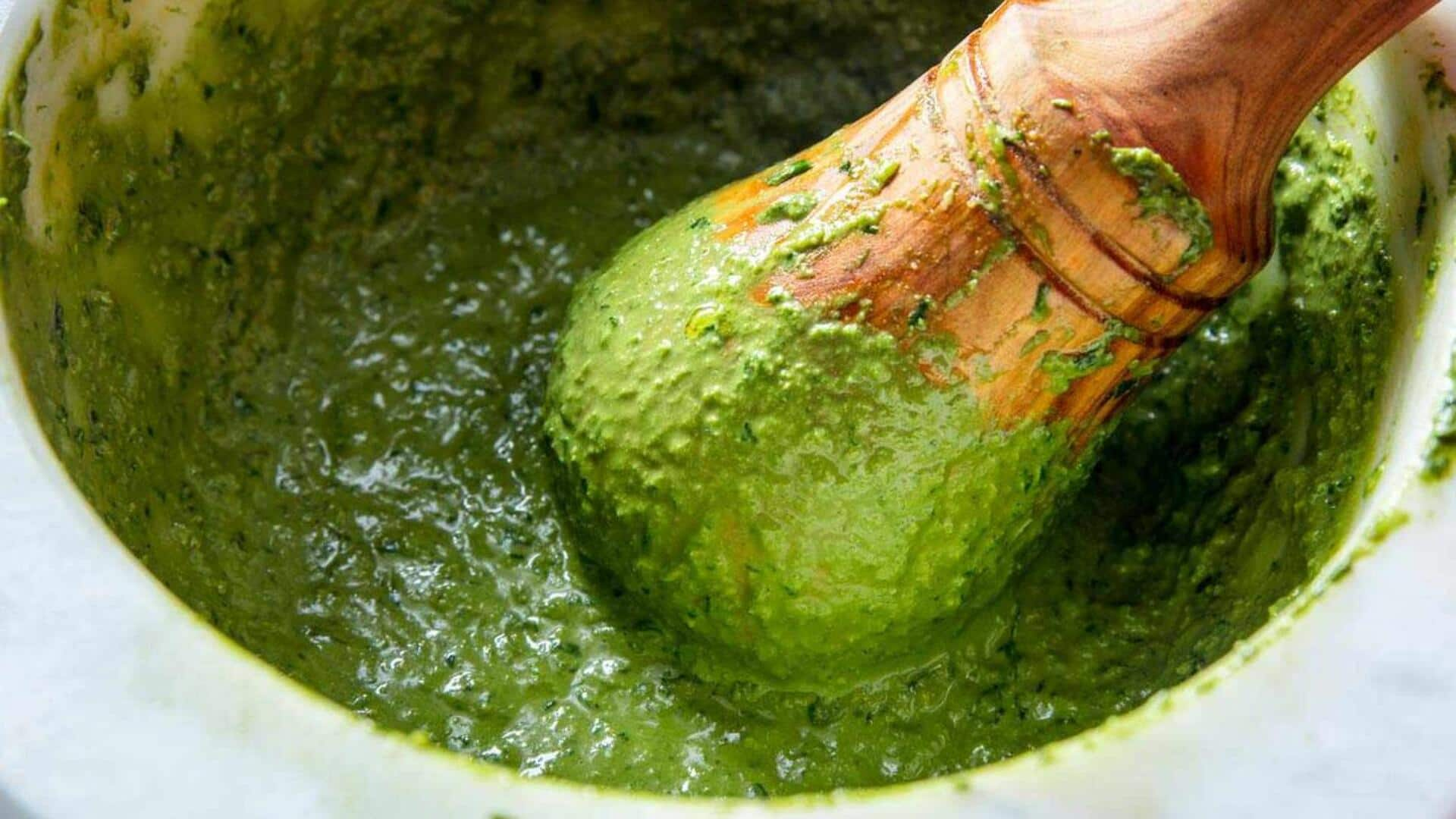
The evolution of Pesto Genovese
What's the story
The original Pesto Genovese, a beloved sauce hailing from Genoa in the Liguria region of Italy, might be spinning in its proverbial grave. Authentically crafted with basil, garlic, pine nuts, Parmigiano-Reggiano, Pecorino cheese, and olive oil, this vibrant condiment has not only traveled far and wide from its Italian roots, but it has also shape-shifted dramatically to suit the whims of global taste buds and pantry constraints.
Technique shift
From mortar to blender
Traditionally, pesto Genovese was prepared with a mortar and pestle, gently grinding basil leaves to slowly release their oils and create a full-bodied flavor. Now, modern convenience has replaced this method with blenders or food processors, significantly reducing preparation time but raising questions about authenticity. This shift has sparked heated debates among purists who argue that the change in technique results in a noticeable difference in texture and taste.
Adaptation
Global ingredient twists
As Pesto Genovese traveled the world from Italy, it evolved, adapting to local preferences and ingredient availability. In places where pine nuts are too expensive or unavailable, walnuts or almonds became substitutes. Vegan versions ditch traditional cheeses in favor of nutritional yeast or omit them altogether. These changes have led to a vast global landscape of pesto variations, all while maintaining the heart of the original recipe.
Versatility
Culinary uses beyond pasta
Although traditionally paired with pasta like trofie or linguine in its native Liguria, Pesto Genovese shines in its versatility in the global culinary scene. It is slathered on sandwiches and pizzas, drizzled over salads, and even used to marinate veggies before roasting. This versatility highlights pesto's magic - it's not just about pasta. Pesto can transform anything into a meal that tastes like summer on the Italian Riviera.
Balance
Preserving tradition amidst innovation
Worldwide, the battle to safeguard Pesto Genovese's culinary heritage rages on. The Consorzio del Pesto Genovese fights for tradition, encouraging the art of the mortar and pestle through global competitions. This effort strikes a delicate balance between honoring the past and embracing the present, preserving the heart of the recipe while welcoming modern interpretations.